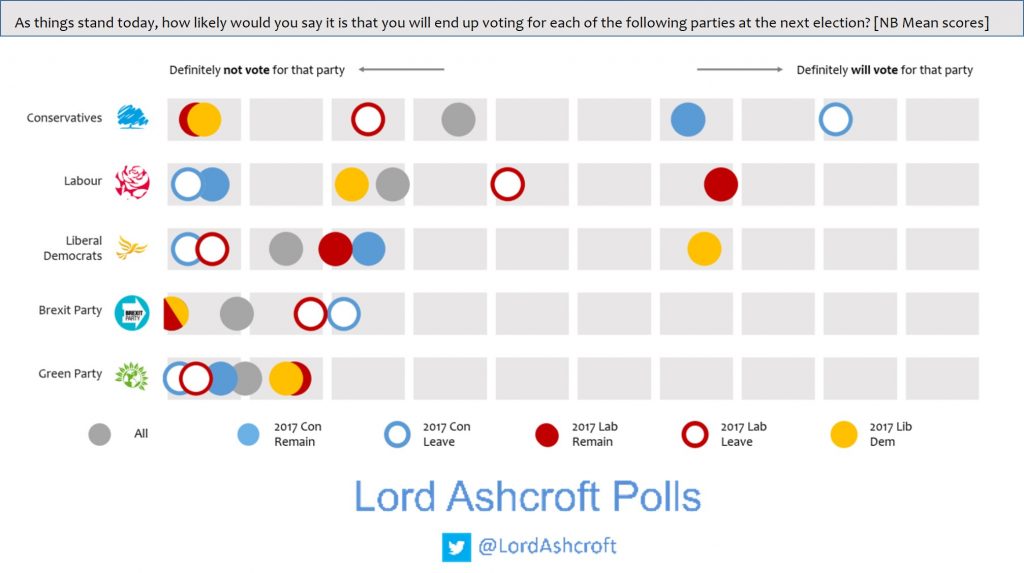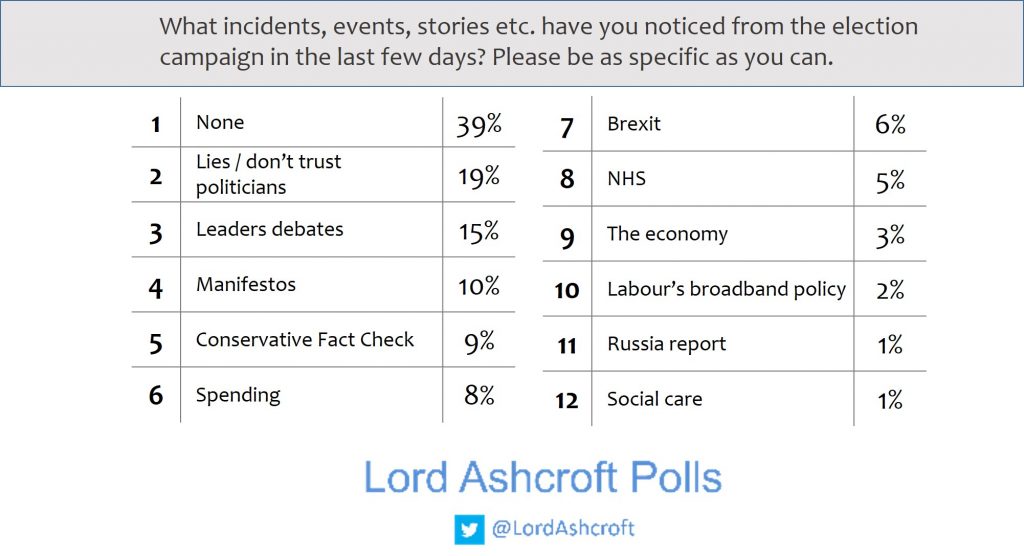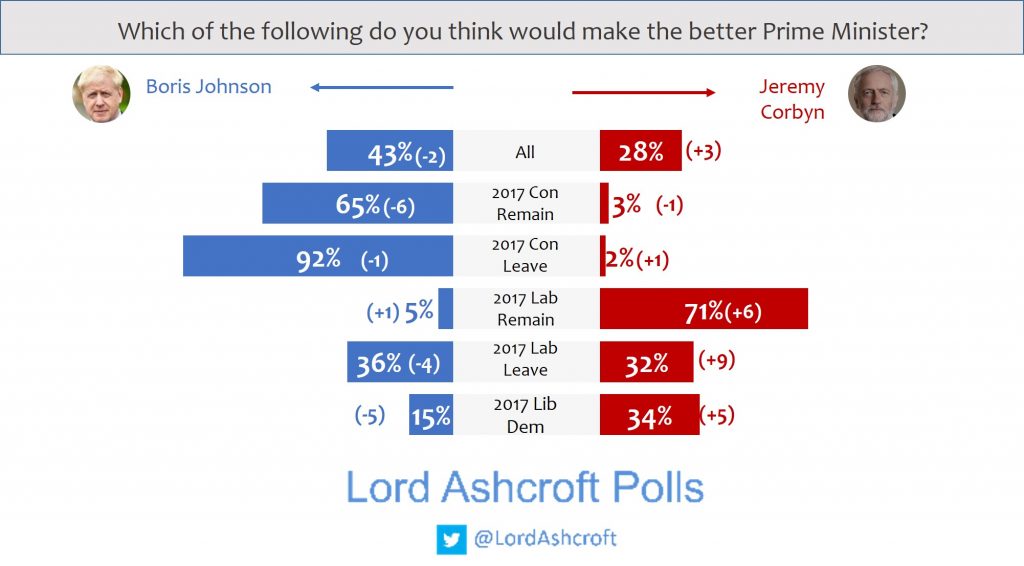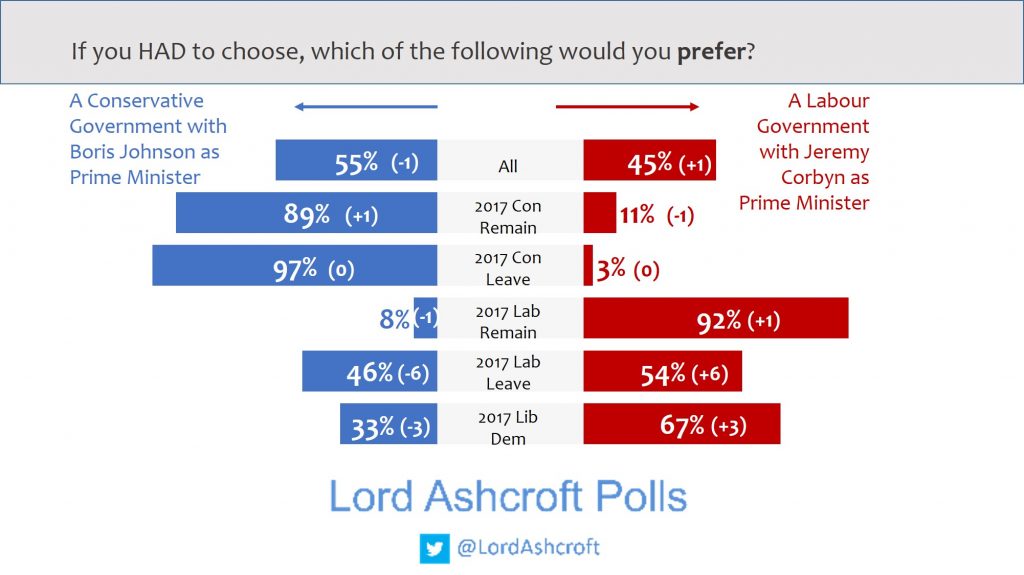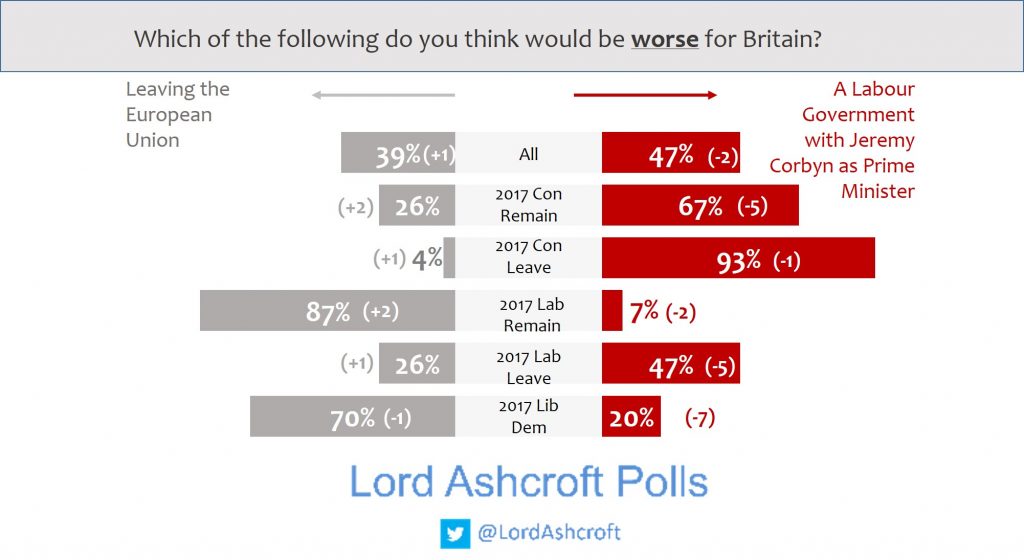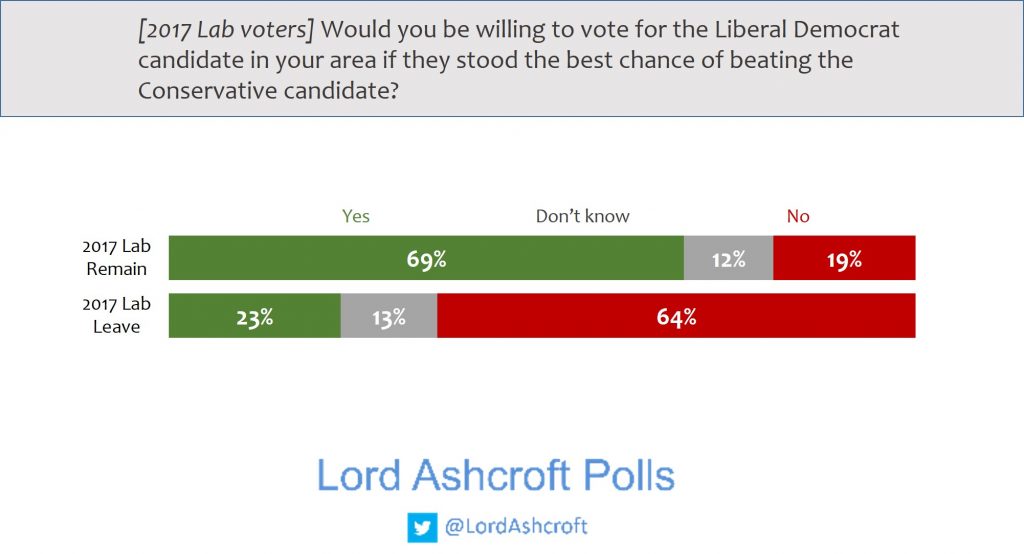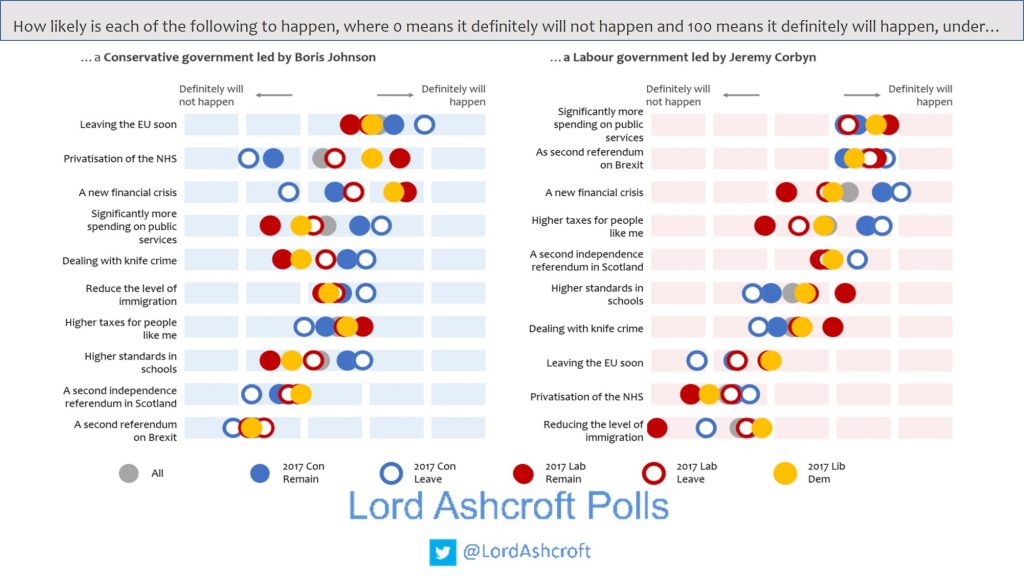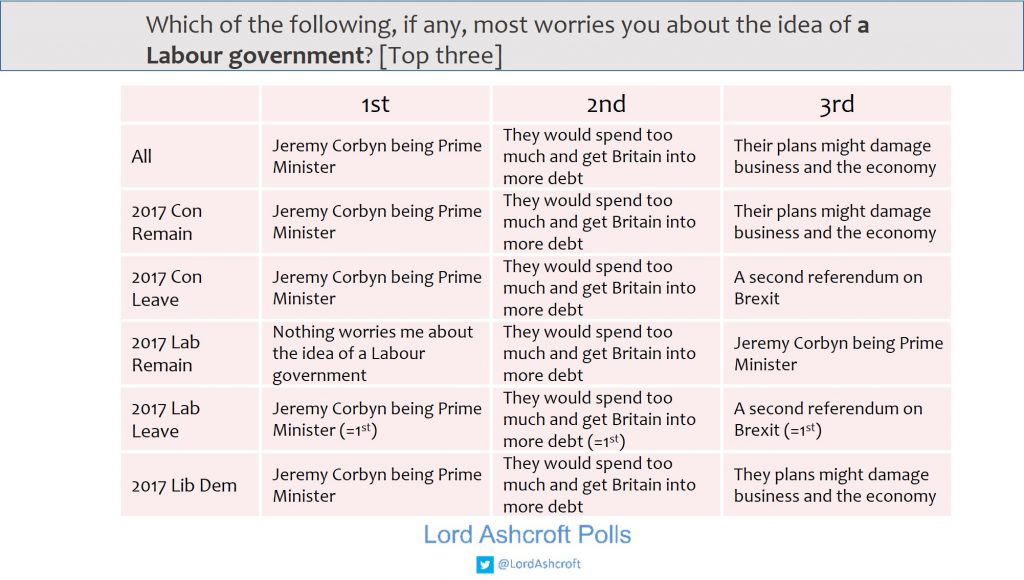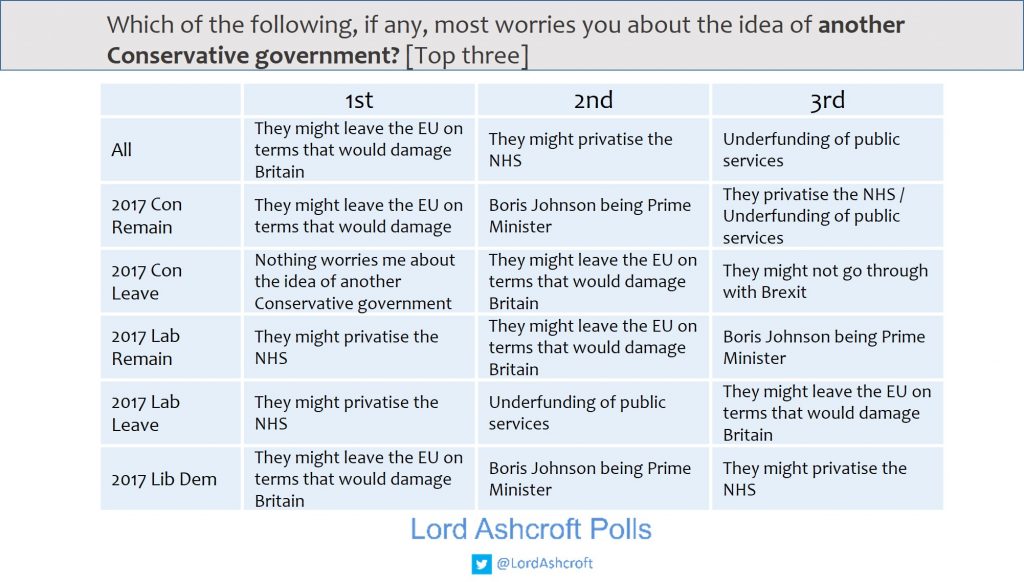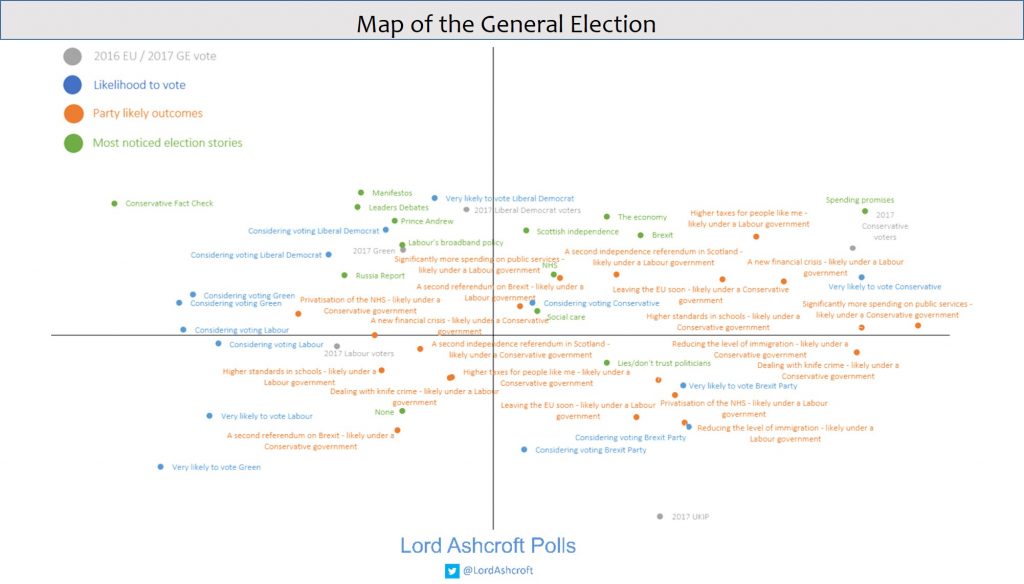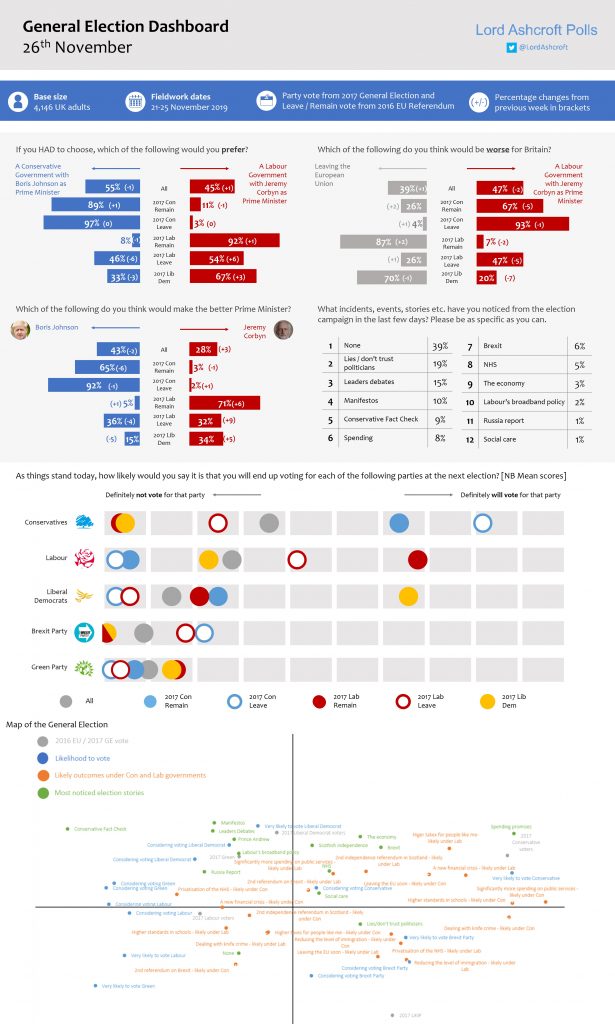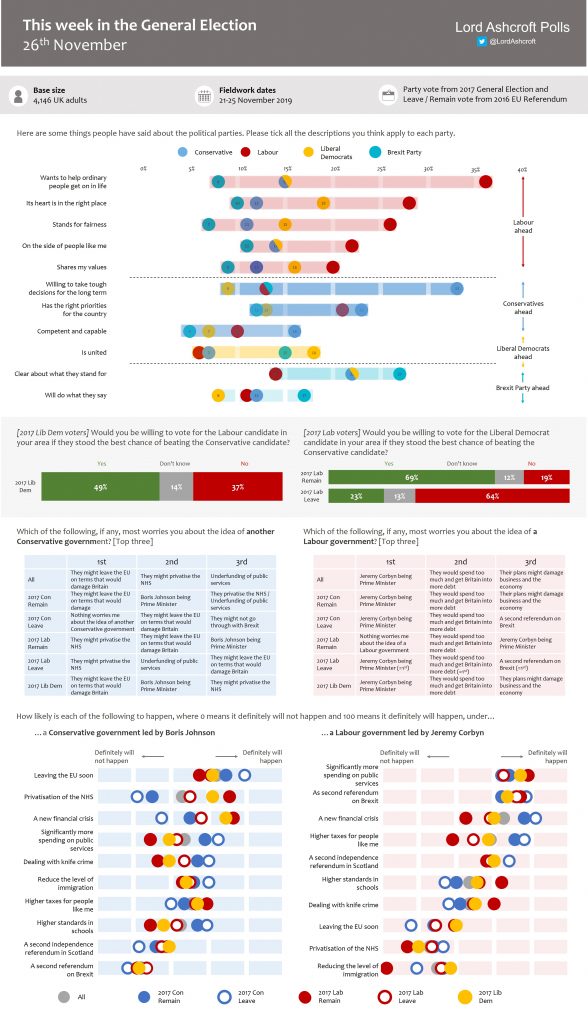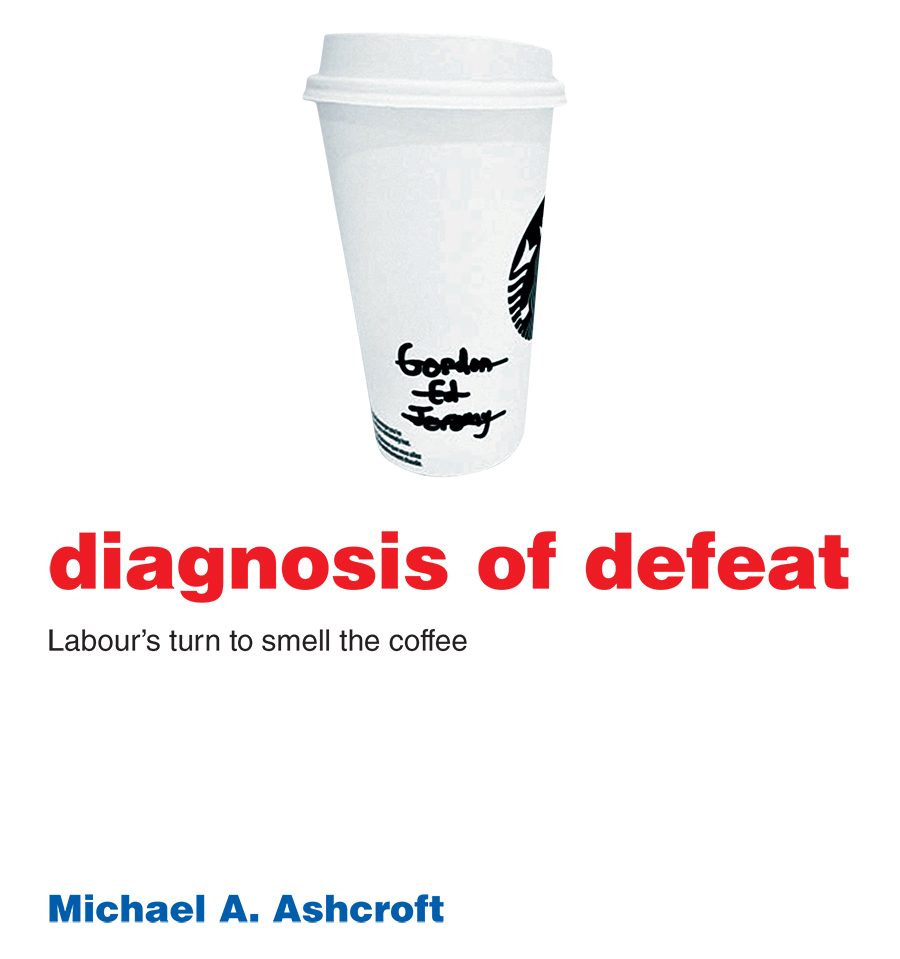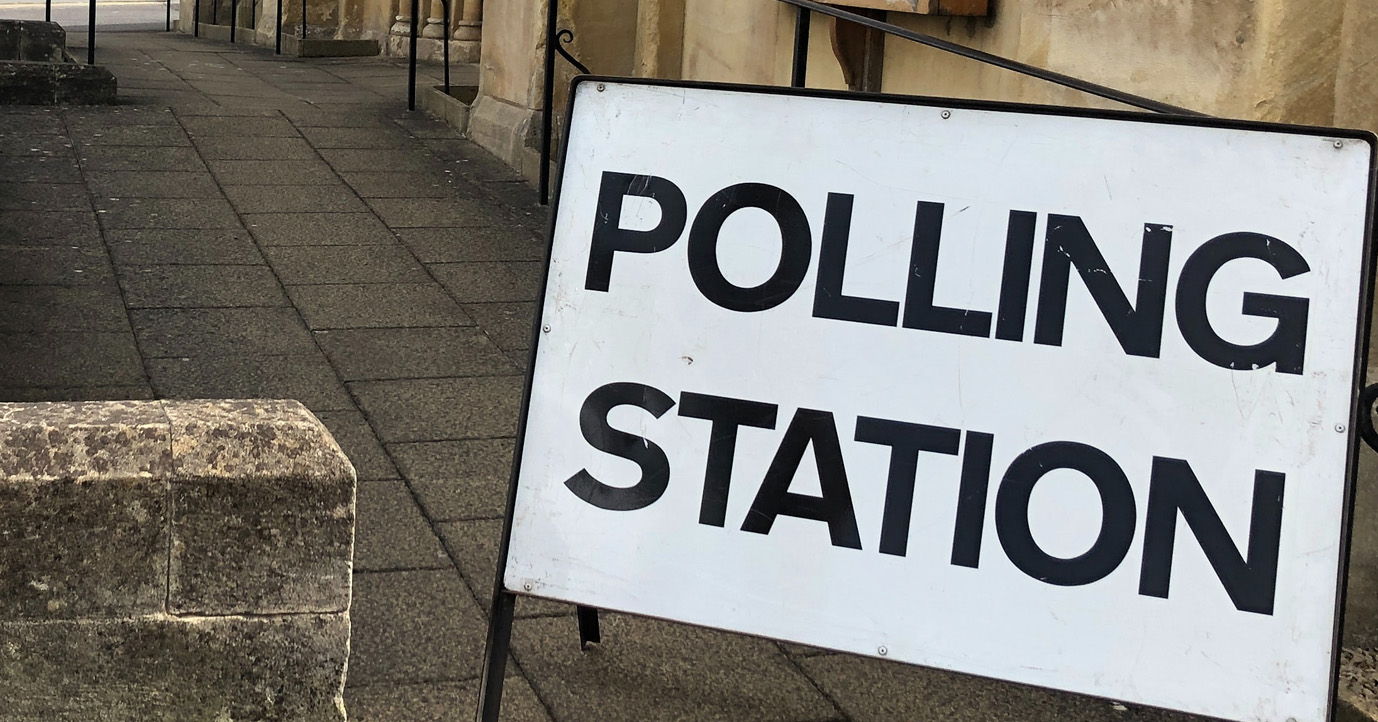
My third general election survey shows the Conservatives still ahead on the fundamentals, but there is some evidence that Labour is managing to firm up its vote among 2017 supporters at the margins, with Labour Leavers showing slightly more reticence about switching to the Tories.
When we ask people how likely they are to vote for each party on a scale from zero (definitely not) to 100 (absolutely certain), the Conservatives’ average likelihood score is unchanged at 36. Labour’s is up from 25 last week to 28, the Liberal Democrats’ down from 17 to 15, and the Brexit Party’s (asked of respondents in non-Conservative seats only) down from 11 to 9.
2017 Conservative Remainers’ likelihood of staying with the Tories is now at 64/100, up from 61 last week and 57 the week before. Conservative Leavers’ mean likelihood of doing so is unchanged at 82, while they put their chances of going to the Brexit Party down from 24 to 22. Labour leavers put their chance of switching to the Tories down from 28 last week to 25 this week, while they say their chances of sticking with Labour are up from 36 to 42/100. Overall, 2017 Conservatives put their likelihood of staying with the party up a point at 77, with 2017 Labour voters’ chance of voting the same way again up from 55 to 60.
Leave voters likelihood of voting Conservative next month is unchanged at 61/100. Remain voters’ average likelihood of voting Labour is up from 40 to 43, Lib Dem down from 31 to 27, and Conservative unchanged at 18.
When we asked people what they had noticed from the campaign in the last few days, the most frequent specific event was the leaders’ debates, followed by manifestos, the Conservative Twitter ‘FactCheck’ story and spending pledges. As in previous weeks, around four in ten said they could recall nothing at all.
Small changes on both sides of the question put Boris Johnson’s lead over Jeremy Corbyn as best Prime Minister down from 20 points last week (45% to 25%) to 15 points (43% to 28%). The proportion of Labour leavers naming Johnson is now 36%, down from 40% last week and 44% the week before.
While 93% of those leaning towards the Conservatives name Johnson as the best available PM, only 75% of those leaning towards Labour name Jeremy Corbyn – meaning either that they are unsure about their choice of party, or that they are consciously choosing Labour despite its leader.
When we force people to choose between a Conservative government under Boris Johnson and a Labour government with Jeremy Corbyn as PM, voters choose the Tories by a 10-point margin (55% to 45%), down from 12 points (56% to 44%) last week. Labour leavers, who previously said they would prefer a Johnson-led Conservative government by small margins, now say they would rather have Corbyn and Labour by 54% to 46% – a mirror image of their position two weeks ago. Conservative remainers still prefer Johnson and the Tories by 89% to 11%.
Voters as a whole still see the prospect of Prime Minister Corbyn as being worse for Britain than Brexit by 47% to 39%, down from last week’s 11-point margin. Fewer than half (47%) of Labour leavers now take this view, compared to 52% last week and 58% the week before.
Being “willing to take tough decisions for the long term” is the positive attribute most likely to be associated with the Conservative Party, followed by having the “right priorities for the country” and being “clear about what they stand for.” Labour’s strongest suits are wanting to “help ordinary people get on in life,” having their “heart in the right place” and that they “stand for fairness.” Just 16% say the Tories are “competent and capable” (up from 9% in September) while 10% say the same of Labour (up from 5% in September). The Lib Dems are most likely to be considered “clear about what they stand for,” though only 22% of voters say this about them.
In Scotland, 42% say the SNP are clear about what they stand for – the highest rating for any party on any attribute.
Around half of 2017 Labour and Lib Dem voters said they would be prepared to vote tactically to keep the Tories out. 55% of 2017 Labour voters said they would be prepared to vote for the Lib Dems if they stood the best chance of beating the Conservative in their constituency (including 58% of those currently leaning towards Labour in this election), and 49% of 2017 Lib Dems said they would vote Labour in the same circumstances (including 55% of those currently saying they are most likely to vote Lib Dem in December).
We asked our participants how likely a variety of developments were to happen under a Conservative government led by Boris Johnson, and a Labour government led by Jeremy Corbyn. Leaving the EU soon was considered the most likely development under the Tories, and a second EU referendum the most probable development on the list under Labour.
NHS privatisation and reductions in immigration were also thought more likely under the Conservatives than Labour, while a second Scottish independence referendum, a new financial crisis, and significantly more spending on public services were also thought more likely under Labour.
The chances of “higher taxes for people like me” were thought to be only slightly higher under Labour (58/100) than under another Conservative government (51/100).
People’s biggest worries about another Conservative government are that they might leave the EU on terms that might damage Britain, privatise the NHS, and underfund public services. Nearly two thirds (64%) of Labour leavers said they were worried about NHS privatisation, 56% about underfunding, and 46% about the terms of Brexit – while 43% were also concerned about erosion of workers’ rights and environmental protection under another Tory government.
The top three worries about a Labour government taking over were Jeremy Corbyn becoming Prime Minister, spending too much and getting the country into more debt, and that their plans might damage business and the economy (each of these being concerns for between 69% and 88% of Conservative remainers and around half of 2017 Lib Dems). Just under half (47%) of Labour leavers are concerned about Corbyn as PM, extra debt, and a Labour holding a second EU referendum.
Our map of the campaign shows how different issues, attributes, personalities and opinions interact with one another. The closer the plot points are to each other the more closely related they are. This week we see, for example, that the Conservative ‘FactCheck’ story was most likely to be recalled by voters very far indeed from Conservative voting territory, as is also the case with the Russia report – while spending promises are most likely to have been registered by those likely to be the most sceptical about them, and those who think they have heard ‘lies’ are closest to Brexit Party supporting territory.
